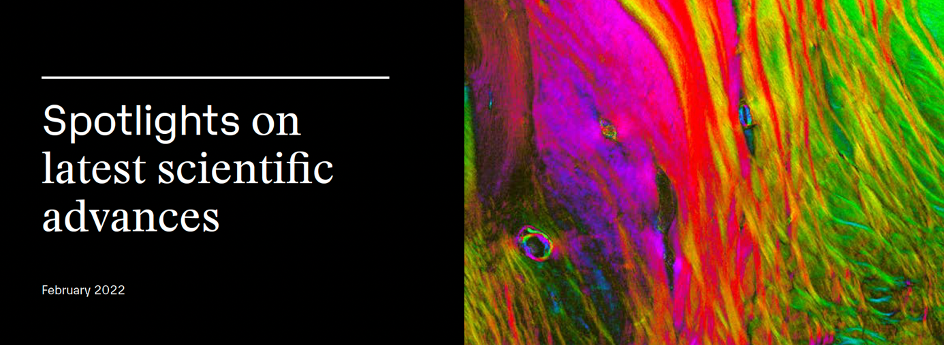In an article published in eNeuro, fifteen leading scientists of the European Human Brain Project (HBP) outline how a new culture of collaboration and an era of digitalization has transformed neuroscience research over the last decade.
“The way we study the brain has changed fundamentally in recent years,” says first author Katrin Amunts, HBP Scientific Director, Director of the C. and O. Vogt-Institute of Brain Research, Düsseldorf and Director at the Institute of Neuroscience and Medicine at Research Centre Jülich. “In the past, separate communities have often focused on specific aspects of neuroscience, and the problem was always how to link the different worlds, for example, in order to explain a certain cognitive function in terms of the underlying neurobiology.”
The HBP has brought together communities from different disciplines and countries to work collaboratively on common goals. In the new eNeuro article “Linking brain structure, activity and cognitive function through computation”, the HBP researchers outline their scientific approach and illustrate the potential of the EBRAINS infrastructure for neuroscience research.
The human brain is one of the most complex systems known, and many of its most basic functions are still not fully understood. There is an urgent need to gain deeper insights into the complexity of the brain in order to target mental and neurological diseases. This requires the integration of insights from multiple scales both on the spatial and temporal level. To address this challenge, the HBP has built the digital research infrastructure EBRAINS in a co-design approach between neuroscientists, developers, engineers and informaticians.
The authors highlight the increasing need for digital tools and describe how HBP scientists employ highly advanced methods from computing, neuroinformatics, simulation and artificial intelligence to carry out cutting-edge brain research. “The HBP is the first large-scale project that systematically connects brain research, medicine and information technologies,” says Viktor Jirsa, Director at the Institut de Neurosciences des Systèmes of Inserm and Aix-Marseille University and last author of the eNeuro article. “The HBP has challenged us to think beyond the boundaries of our own laboratories and domains and has enabled us to go much further than we could have ever gone by ourselves.”
The development of neuro-inspired technologies hugely benefits form the growing body of insights into perception, plasticity and learning. In this way, brain research is becoming a key driver of technological advances in computing, artificial neuronal networks, cognitive computing and neurorobotics. “Basic neuroscience research is the rocket fuel for advances in medicine and IT,” says Jirsa.
Together with the broader neuroscience community, the authors are now drafting a position paper outlining their scientific vision for the next decade of digital brain research. Researchers across Europe are invited to contribute to the living paper that has recently been published. “We will continue to make neuroscience more open, cooperative and participatory,” says Amunts.
Further Info:

New HBP brochure: Spotlights on latest scientific advances
In our new brochure, we highlight some of the most recent scientific breakthroughs of
the Human Brain Project. A selection of spotlights gives a taste of what HBP
research has achieved over the last two to three years and where it is headed in its
final phase. The advances presented in this brochure have been enabled by a
collaborative approach connecting sophisticated technology and neuroscienceresearch. Research leaders explain why these breakthroughs have only been made
possible by the HBP and with the help of its digital research infrastructure EBRAINS.
Leading scientists from the US BRAIN Initiative and the Australian Brain Alliance
provide their perspective on how the HBP is perceived internationally.
Find the digital version
here/div>
ABOUT THE HUMAN BRAIN PROJECT
The Human Brain Project (HBP) is the largest brain science project in Europe and
stands among the biggest research projects ever funded by the European Union. It is
one of the three FET Flagship Projects of the EU. At the interface of neuroscience
and information technology, the HBP investigates the brain and its diseases with the
help of highly advanced methods from computing, neuroinformatics and artificial
intelligence, and drives innovation in fields like brain-inspired computing and
neurorobotics.
As a lasting contribution to the global science community, the HBP created
EBRAINS, an open European research infrastructure that allows scientists and
technology experts to seamlessly collaborate, accelerating advancements in the
fields of neuroscience, computing and brain-related medicine.
ABOUT EBRAINS
EBRAINS is a new digital research infrastructure, created by the EU-funded
Human Brain Project, to foster brain-related research and to help translate the latest
scientific discoveries into innovation in medicine and industry, for the benefit of
patients and society.
It draws on cutting-edge neuroscience and offers an extensive range of
brain data sets, a multilevel brain atlas, modelling and simulation tools, easy
access to high-performance computing resources and
to robotics and neuromorphic platforms.
All academic researchers have open access to EBRAINS’ state-of-the art
services. Industry researchers are also very welcome to use the platform under
specific agreements. For more information about EBRAINS, please contact us
at info@ebrains.eu or visit www.ebrains.eu

